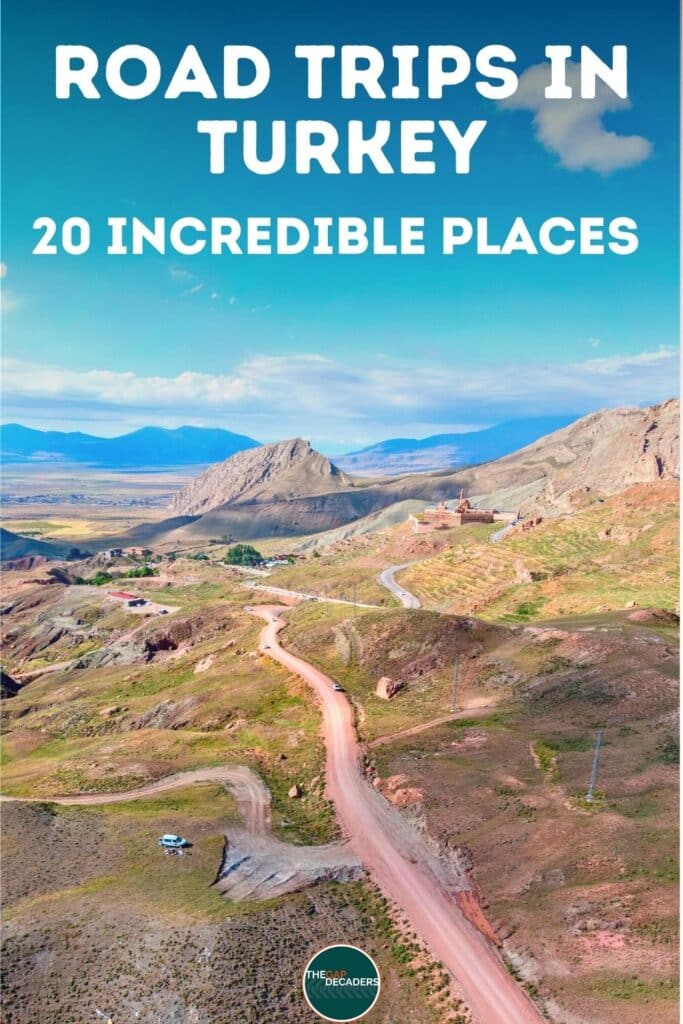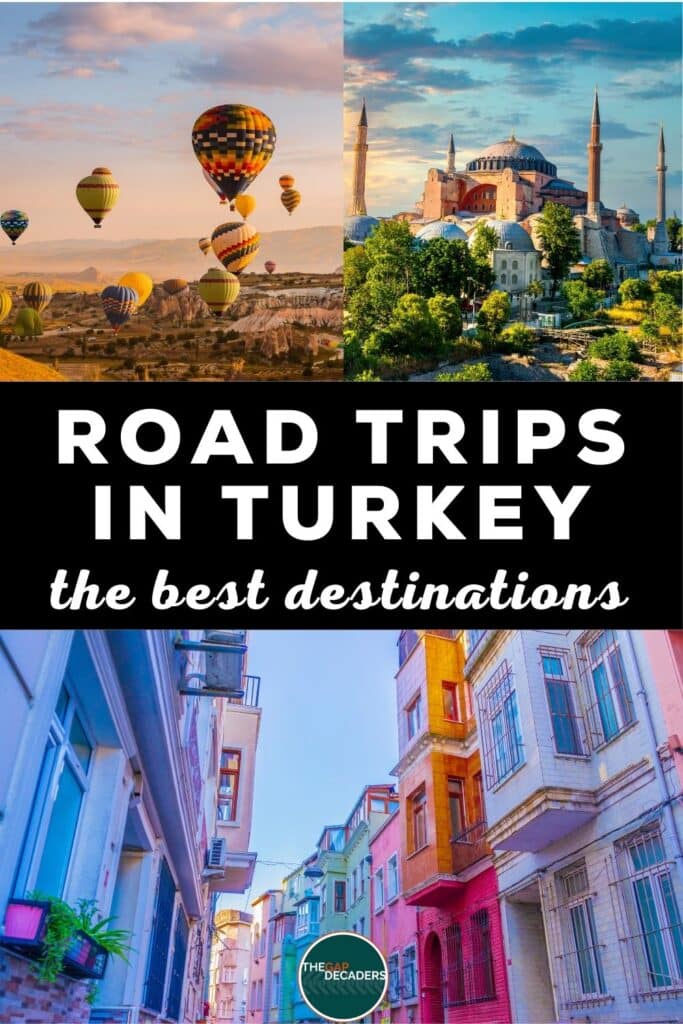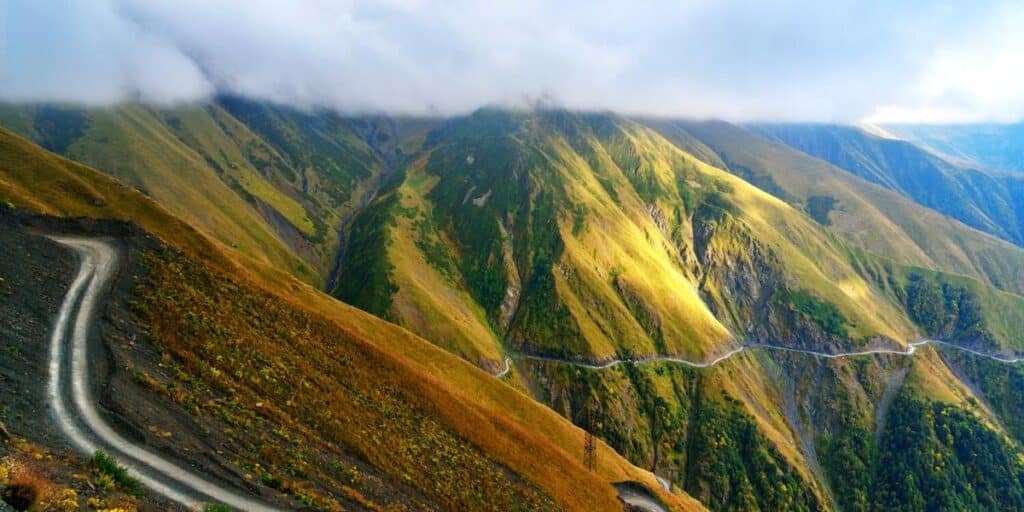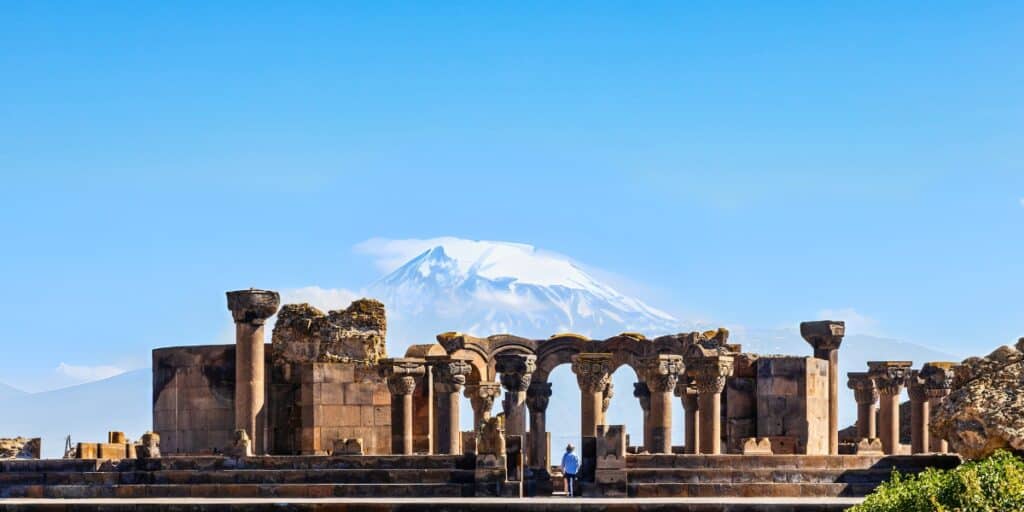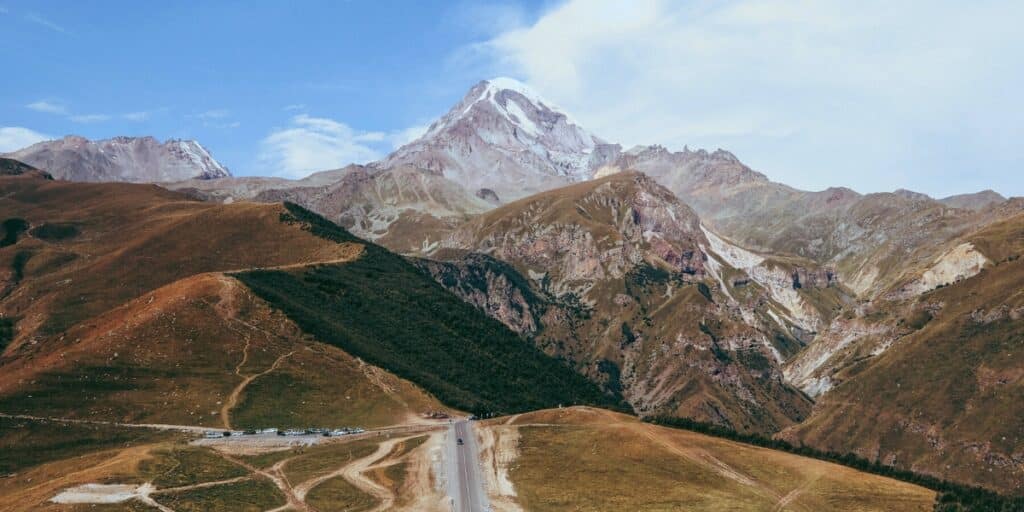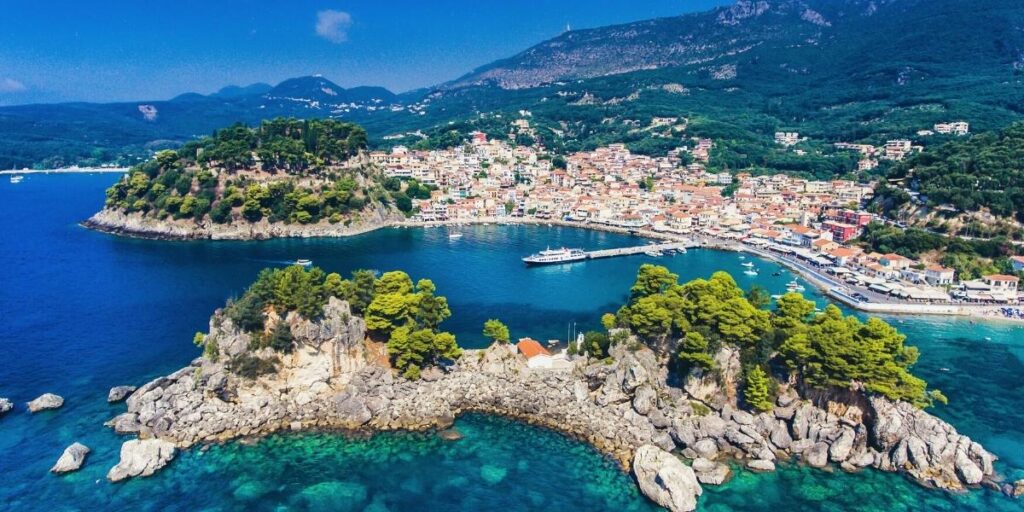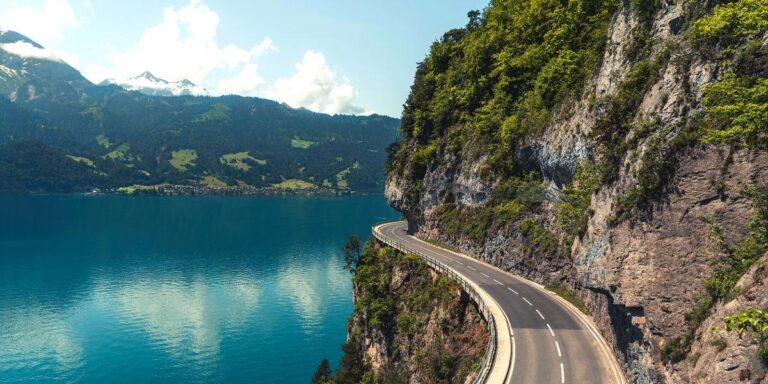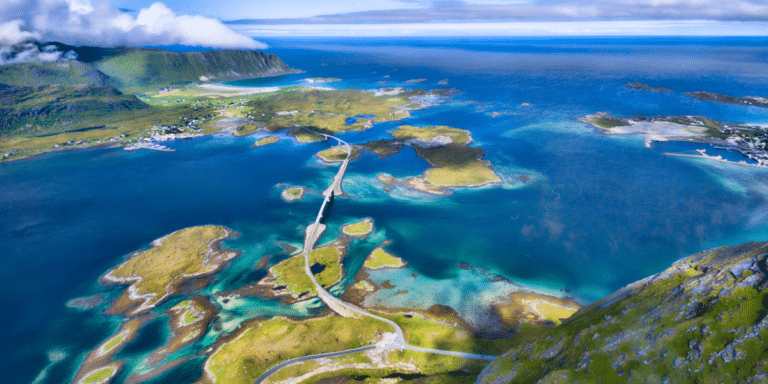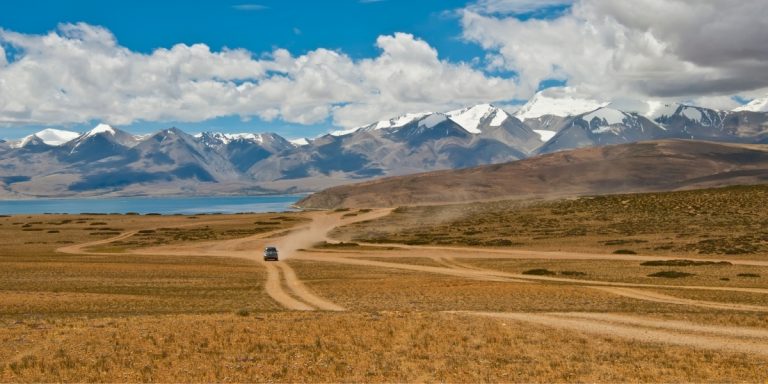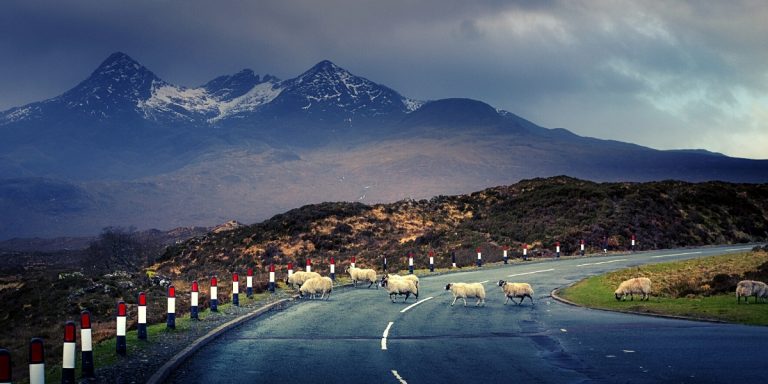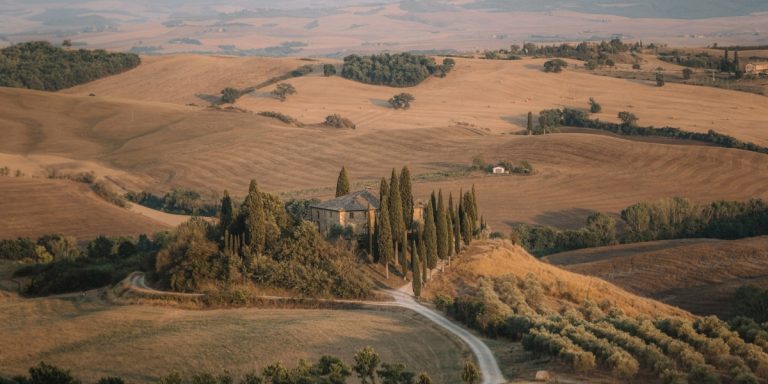This post may contain affiliate links, from which we earn an income. Click here to read our affiliate policy.
Turkey is a one-of-a-kind country, with a foot in both Europe and Asia. Its dramatic mountains, seemingly infinite grassy steppe and beautiful turquoise coastlines make Turkey a diverse place to road trip, where long stretches of sweeping roads cut through the rich history, vibrant towns and incredible landscapes.
Home to some of the kindest and most generous people we have ever met, a road trip in Turkey will reward you with long-lasting friendships, unforgettable experiences and incredible historical sites.
We spent twelve weeks road tripping in Turkey and were lucky enough to visit all four corners of this fantastic country. But, Turkey is vast and even with a three month road trip itinerary, we weren’t able to get around all of it! We asked our favourite bloggers to tell us about the best places they have visited in Turkey.
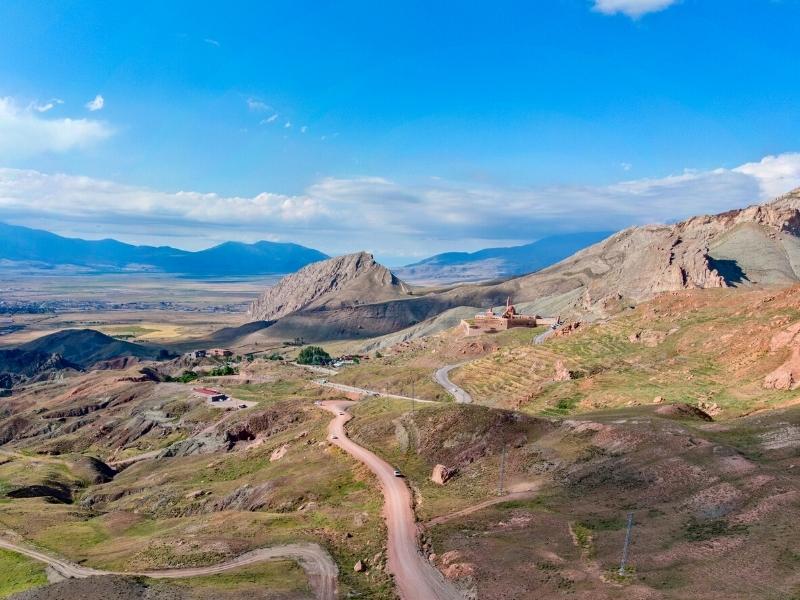
When to Visit Turkey
You can road trip Turkey any time of the year as there are seven distinct geographic weather and climatic regions, meaning you can always find the right weather for your Turkish trip.
For winter sun head for the Mediterranean coast and Antalya, which is warmer and drier than the overcast Aegean coast. Temperatures can get to around 20° celsius (68° fahrenheit) between November and March, warm enough for the beach, but it will be cold at night. Much of the rest of Turkey will be properly cold and wet, and lots of places seeing snow.
In summer, parts of Turkey regularly push past 40° celsius (104° fahrenheit), with little change between day and night temperatures. If you love the heat and want to travel during July and August, head for the mountains for a bit of respite, ramp up the aircon and remember the suncream!
The absolute best times to travel by car around Turkey are spring and autumn. These shoulder months of late March and April and late September through October offer fewer extremes of weather, fewer visitors and quieter roads and attractions.
In spring, wildflowers carpet the interior and the countryside wakes up as warmer weather beckons. In autumn, the bounty of the harvest means roasting chestnuts in town centres, wine harvests and colourful forests.

Building a Turkey Itinerary
Turkey is a huge country – it’s a 20-plus hour drive from Istanbul in the west to Van in the far east. If you wanted to drive a circular route around the whole country, it would take around 70 hours, and that’s not even touching the interior!
Unless you have a few months for your trip and are happy to drive for many hours in a stretch, we would suggest visiting one area where a cluster of attractions and must-see places can be grouped together to create a route and itinerary. We have organised our go-to destinations by region – Aegean; Black Sea; Central Anatolia, Eastern Anatolia, Marmara, Mediterranean and Southeast Anatolia.
Consider one-way rental car drop-off, as the ideal route will be linear to make the most of your time and help you see as much of Turkey as possible. If you want to experience the true diversity of Turkey, domestic flights will take you to all the far-flung corners of the country, or you could be really adventurous and get a sleeper train between them.
Planning your car rental in Turkey? Find out all you need to know about hiring a car and driving in Turkey. You’ll want to read this before you go!
Turkey Road Trip Map
How to use this map – Use your fingers (or computer mouse) to zoom in and out. Click or touch the icons to get more info about a place, and click the arrow in the box top left to open the index. To add to your own Google Maps account, click the star next to the title of the map.
Is this your first time visiting Turkey? Get all the information you need in our Turkey Travel Guide, including what to pack, the best time of year to go, getting there and practical tips to help you have the best trip!
Aegean Region
Izmir
Explored by Sean of The Turkey Traveler
When it comes to places to visit in Turkey, there is perhaps nothing more well-rounded than the city of Izmir. Located on the Aegean coast, Izmir is a vibrant and beautiful city full of history, culture, and stunning scenery. Right off the bat, its location means that you are close to beautiful beaches and turquoise waters.
The city also boasts amazing historical sites such as the Agora of Smyrna, an ancient market square dating back to Greeks in the 4th century BC, and Kadifekale, an ancient fortress dating back to Alexander the Great with stunning views of the city.
However, Izmir’s biggest attractions lie beyond the city. Because of its location, Izmir is commonly used as the base to explore the archaeological ruins of Ephesus and the UNESCO World Heritage Site of Pamukkale-Hierapolis. The Turkish road network allows visitors to go from Izmir to Pamukkale and Ephesus very easily, with a drive of around three hours.
For food lovers, Izmir has a plethora of delicious options ranging from traditional Turkish cuisine to seafood freshly caught from the nearby Aegean sea. Be sure to try the famous İzmir köfte, a type of meatball unique to the region.
When you are visiting Izmir, don’t miss the electrifying nightlife. Because of the big university student population, Izmir has something for everyone. Head to Alscancak for trendy bars and nightclubs and Konak Square for more low-key options.
Shopping is also a must in Izmir with bustling bazaars such as Kemeraltı offering everything from hand-woven carpets to local spices and herbs.
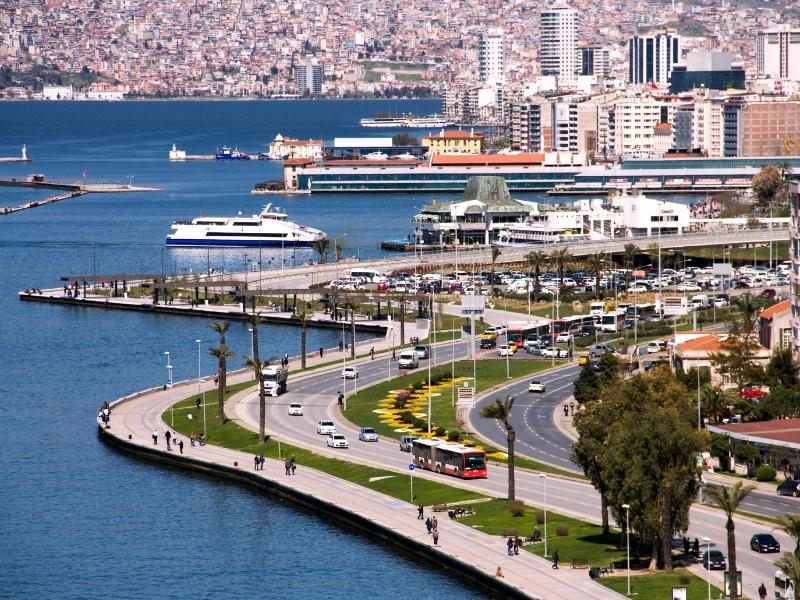
Don’t forget your road trip essentials! Our free road trip checklists help you remember everything, including road trip snacks, podcasts and road trip songs for the journey!
Pamukkale
Explored by Christine of Live Love Run Travel
Pamukkale is one of the places Turkey is famous for. Known for the sparkling blue travertines, Pamukkale is full of relaxing experiences and historical sites to enjoy on a Turkish road trip.
If you visit Pamukkale, a visit to the Pamukkale travertines is a must. However, if you are there in the summer, expect crowds. Arrive early or just before they close for fewer people, and you can also walk down to the middle pools where you will find smaller crowds.
Be careful though – the surface, especially near the top, is slippery. To protect the surface shoes and socks are not allowed, so bring a bag to carry them. Make sure to stay inside the areas where people are permitted, as they are trying to allow some of the natural pools to recover and bleach back out.
You can also swim in Cleopatra’s Antique Pool where the ruins of a temple near the pool collapsed into it during an earthquake back in the 7th century. This has an additional fee after entering the historical area, but it’s a good spot to cool off on a hot day.
If you are wanting to see some still-standing ruins, make sure to walk through the ruins of Hierapolis. You can find the well-preserved theater, Byzantine Gate, and other ruins and partially preserved buildings. Another option is to relax at one of the nearby hotels. Many offer extensive spa services and have thermal pools of their own.
Don’t miss a stop in Pamukkale when planning a Turkey road trip adventure. It is worth the stop as a day trip or a longer stay to relax and enjoy the history of the area.
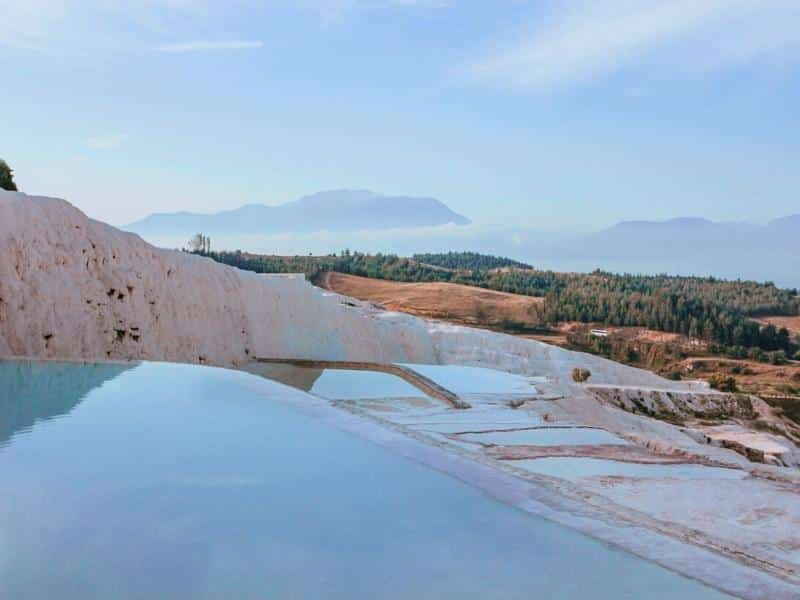
What about staying connected in Turkey? In our detailed guide to SIM cards in Turkey, we share how to get a tourist SIM, the best eSIMs for Turkey and how to get a Turkey SIM card before you even get there!
Black Sea Region
Safranbolu
Explored by Soumya of Stories by Soumya
One of the best places to visit in Turkey is the beautiful Ottoman city of Safranbolu. Located in northern Turkey, in the region surrounding the Black Sea, Safranbolu is a UNESCO site and a hidden gem waiting to be explored.
Safranbolu is best known for its well-preserved timbered houses dating back to the Ottoman era. They display exquisite Ottoman architecture that is hard to find in other parts of Turkey. Walk through the old quarter and marvel at these timber-framed mansions. You can also visit some of them for a small fee, such as the Kaymakamlar Museum, or spend a night in one of the many Ottoman-mansion-turned-hotels.
There are plenty of other interesting things to do in Safranbolu such as visiting the Koprulu Mehmet Pasa Mosque, exploring the displays at the Kent Museum, getting scrubbed in the Cinci Hammam, and having some coffee at the Cinci Han Hotel, housed in an old caravanserai. Do not forget to head to the old bazaars and pick up some quaint Turkish souvenirs such as engraved metalwork, leather products, and Safranbolu lokum, a type of Turkish Delight.
As you move on from Safranbolu, be sure to head to the nearby Bulak Caves (filled with stalactites and stalagmites) and the Incekaya Aqueduct, one of the last remnants of the Byzantine Empire.
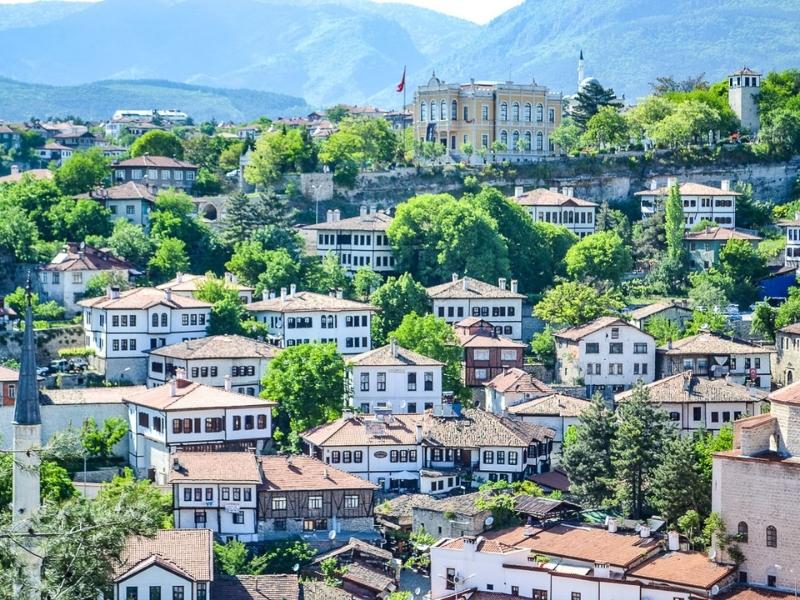
Sumela Monastery
Explored by Roxanne of Far Away Worlds
Situated in the Altindere National Park in northeastern Turkey, Sumela Monastery is one of those places that seem to have come straight out of a fairytale. The monastery is tucked into forested mountains and perched at the foot of a sheer cliff, overlooking valleys, rivers and mountains.
Reaching the monastery is only possible by taking a shuttle in the national park and the route is twisting with sudden turns. The path through the forest is steep, culminating at the foot of a narrow flight of stairs, with the remains of an ancient aqueduct visible on the side of a cliff. Simply arriving at the monastery is an adventure in itself.
Built in the 4th century, the monastery is close to 1,600 years old and one of the oldest Greek Orthodox monasteries in the world. The Rock Church is the main attraction at the site and the oldest part of the monastery complex. Believed to have housed an icon of the Virgin Mary, the church was carved into the cave by two Athenian monks. Both the interior and exterior walls are covered with frescoes, dating from different time periods, although they have been significantly damaged through the years.
After seeing the church, visitors can explore more of the complex including the smaller chapels, kitchens, library and holy water fountain. The large aqueduct at the entrance is also impressive and many of its arches have been restored. And, of course, the magnificent views from the monastery are also a highlight of the visit.
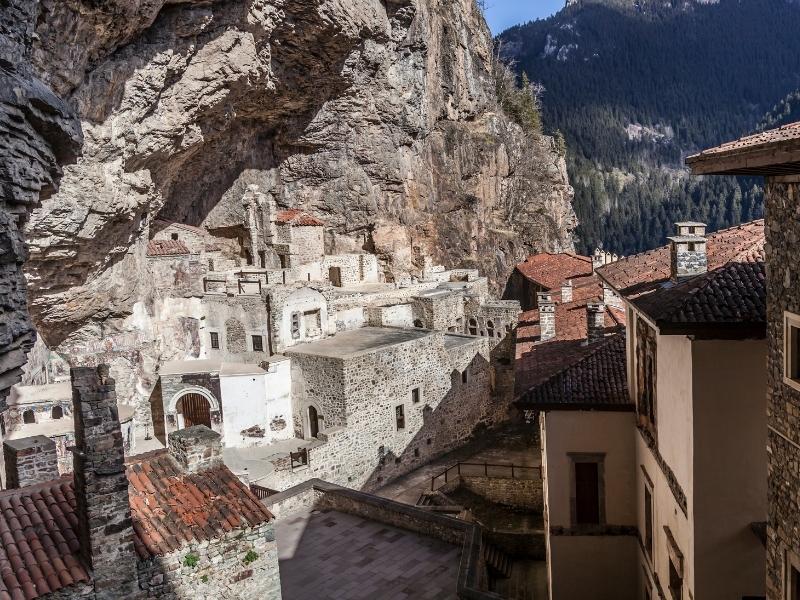
Make sure you have travel insurance you can trust when visiting Turkey. We recommend True Traveller for their 5-star TrustPilot reviews, variety of cover options, best activities cover as standard, great prices and excellent service.
Central Anatolia Region
Ankara
Explored by Claire of Europe in Winter
Ankara is Turkey’s capital city, but it’s nearly always overshadowed by the country’s largest and much more famous metropolis, Istanbul.
While Istanbul is definitely a place to rave about, that doesn’t mean Ankara should be completely forgotten on your road trip.
The city was only declared the capital of Turkey in 1923, but its history dates back millenniums. While doesn’t have quite the same allure as Istanbul, there are a good few museums here, along with plenty of cafes, excellent places to try Turkish food, and hammams.
Must-sees include the Ataturk Museum, which is a huge complex that celebrates the founder of modern Turkey, Ankara Castle which dates back to the 7th century and was expanded by the Ottomans, and the fascinating Museum of Anatolian Civilisations which is an exhibition of archaeology throughout the centuries.
It’s also worth visiting the Haci Bayram Mosque, which is the most impressive in Ankara. While it’s not as famous as the Blue Mosque in Istanbul, it’s still well worth a look!
If you’re tired after a busy day of exploring, soak in the Karacabey Bath which is a Turkish bathhouse in the centre of town. For dinner, Turkish restaurants line almost every street, or opt for a vegan kebab at Vegankara or visit Triyle Restaurant for incredible seafood.
If you’re visiting Ankara in winter, be mindful that it can be very chilly – while Turkey seems like it will be warm year-round, this isn’t the case on the Anatolian plateau! However, pretty much all of the attractions I’ve listed are visitable year-round.
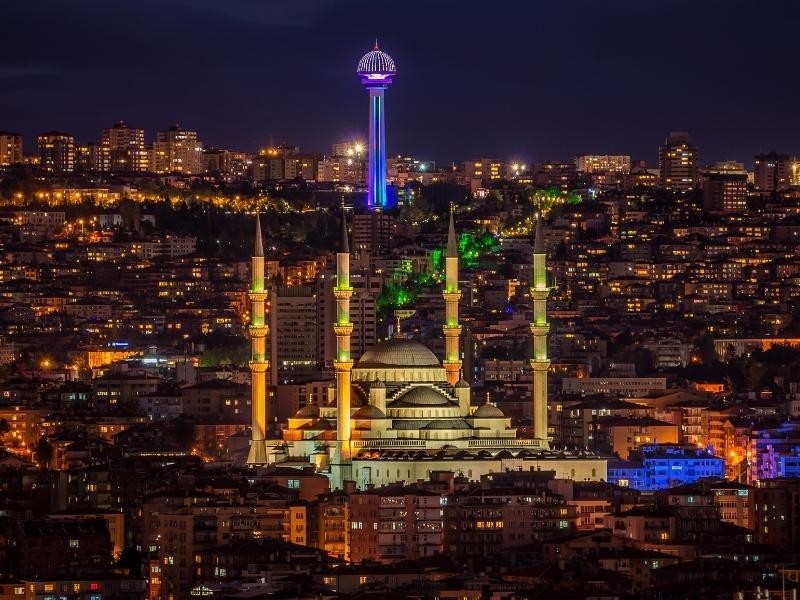
Cappadocia
Explored by Phil & Izzy of The Gap Decaders
Undoubtedly Turkey’s most famous and most visited tourist destination, Cappadocia is a fascinating place where fairytale landscapes meet underground cities and lively towns, and the skies fill with hot air balloons at dawn every day.
It’s easy to spend a week or so exploring this unique place in the heartland of Turkey, which is like nowhere else on earth. Sitting on a high plateau over 1000 meters in altitude and pierced by dramatic volcanic peaks, Cappadocia is not one single place but a region of towns and valleys.
Goreme is probably the best-known town in Cappadocia and is home to the Goreme Open Air Museum with its rock chimneys and the magnificent Dark Church. You’ll also find a plethora of rock-hewn hotel rooms and cave suites, restaurants and tour companies that offer balloon flights, horse trekking and quad bike tours. Nearby are the famous Love Valley, home to phallic rock formations and Rose Valley, lined with glorious pink and red rocks.
East of Goreme is Urgup, a slightly more upmarket town with gorgeous hotels and eateries. To the south are the famous underground cities of Kaymakli, Mazi and Derinkuyu.
One of the best ways to explore is to get out in your car early one morning. The whole area around Goreme is crisscrossed with tracks where you can find a spot to watch the dawn balloon spectacular, which is even better from the ground.
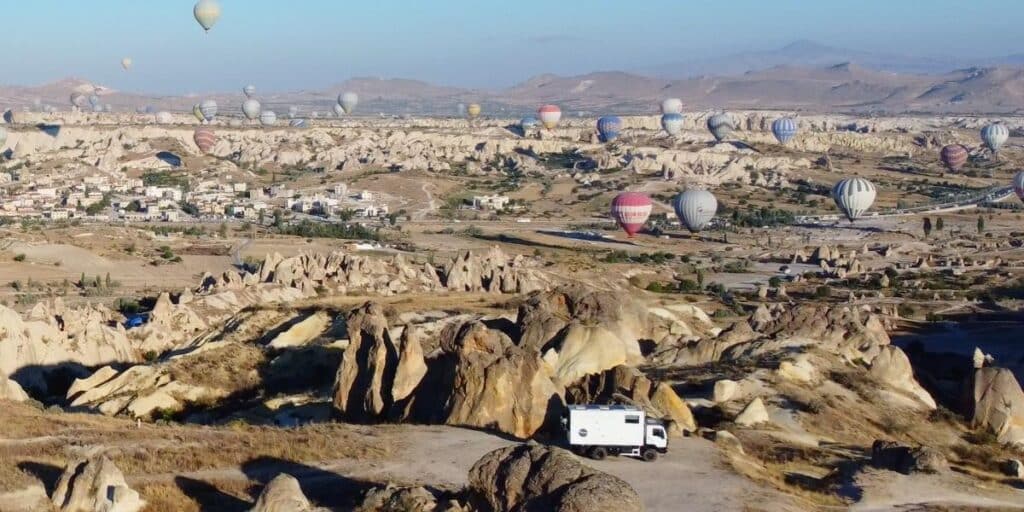
Konya
Explored by Phil & Izzy of The Gap Decaders
An economic powerhouse in central Turkey, conservative Konya is the home of the whirling dervishes and protector of Seljuk culture.
One of the oldest urban centres in the world, you should visit Konya for the ancient mosques and hammams hidden amongst the maze of alleys in the old town, and the wide avenues of the new town, lined with shiny architecture and coffee shops.
For many, the main reason for the visit is the Mevlana Museum, the former lodge of the whirling dervishes and one of the largest pilgrimage centres in Turkey. Visit on a Saturday if you can, when the sema ceremony, the ritual dance of the dervishes wearing the traditional costume of tall felt hats and white gowns with long skirts, is performed in the Mevlana Culture Centre. Be prepared for a high-energy experience like no other!
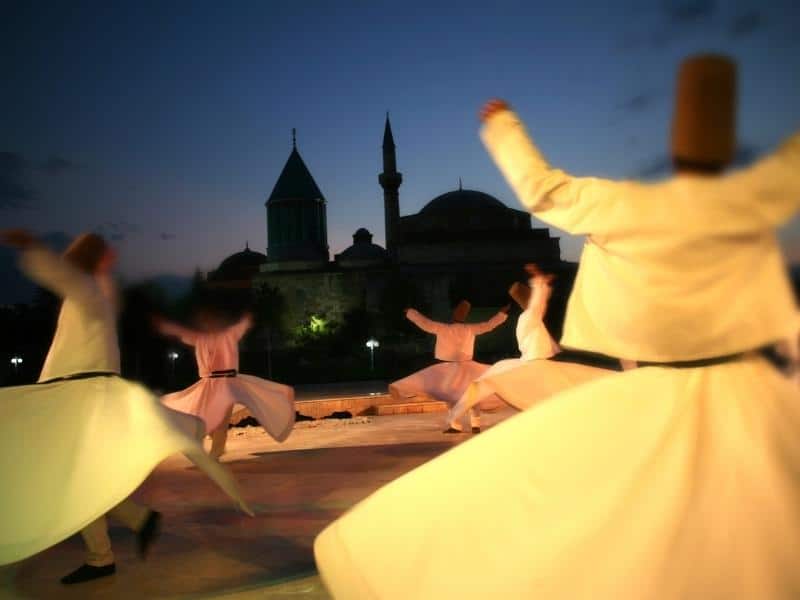
Planning a motorhome tour of Turkey? A new continent with customs so different from our own can be challenging to negotiate. We’ll take you through all the stages of planning your Turkish motorhome adventure, from kitting out your van, understanding legalities and getting there, to how to camp and budget for your trip.
Eastern Anatolia Region
Ani
Explored by Phil & Izzy of The Gap Decaders
Like Mount Ararat, the arid and dusty slopes of Ani once belonged to Armenia. The country’s ancient capital of political, economic, cultural and architectural importance was home to 100,000 people at the beginning of the second millennium and rivalled Constantinople in power.
Much of Ani was toppled by an earthquake in 1319 and in 1336, the mostly Armenian citizens were forced to leave, and so began the decline of a once great Silk Road trading hub which had borne witness to 23 civilizations and dynasties throughout the centuries.
Today Ani is a UNESCO World Heritage Site and an absolute must-see if you’re in eastern Turkey. As you walk under the great arch, your first view is of undulating hills covered in sun-scorched grass, dotted with great buildings silhouetted on the skyline.
Impressive volcanic basalt fortified walls encircle the ruins of numerous churches, mosques and caravanserais which sit on the edge of the Arpacay Gorge. From Seljuk geometric wall patterns to frescoes and intricate carvings, the influences of Christian and Muslim religious traditions are evident as you step back in time and wander this fascinating site.
RELATED POST: Ani Turkey: How to Explore the Ancient City
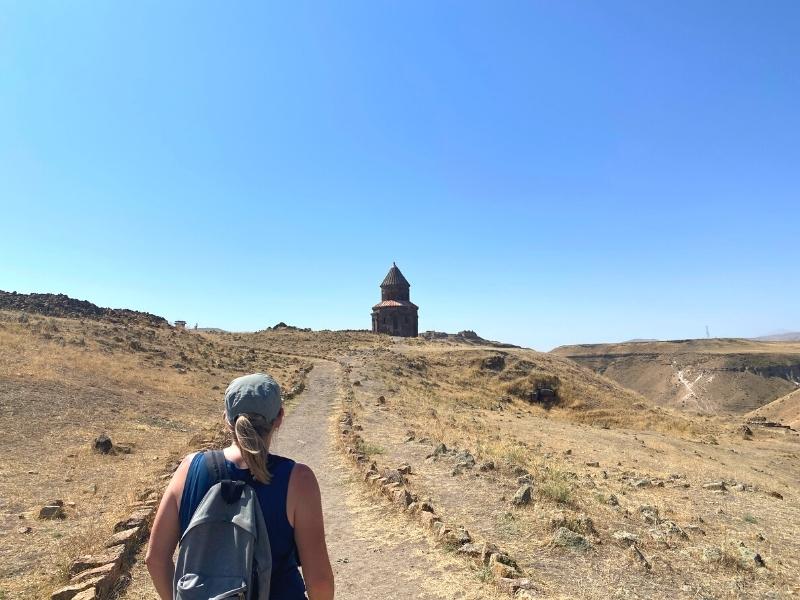
Mount Ararat
Explored by Phil & Izzy of The Gap Decaders
The fabled Mount Ararat (Agri Dagi) is a snow-capped and dormant volcano in the extreme east of the country, which overlooks the point at which the frontiers of Turkey, Iran, and Armenia meet. It consists of two major volcanic cones – Greater Ararat with an elevation of 5,137m and Little Ararat with an elevation of 3,896m.
Ararat is traditionally associated with the mountain where Noah’s Ark came to rest and is sacred to the Armenians, who believe themselves to be the first race of humans to appear in the world after the flood. Legend says the ark is still on the summit, but God decided that no one should be able to look upon it it, although several explorers have claimed to
Not only is Ararat majestic to gaze upon and photograph, but it’s also an epic hike too. There are a number of trekking companies in Turkey that offer organised guided treks and equipment. It’s a standard four day trek to the top, with the biggest challenge being altitude, so you’ll need a little time beforehand to acclimatize.
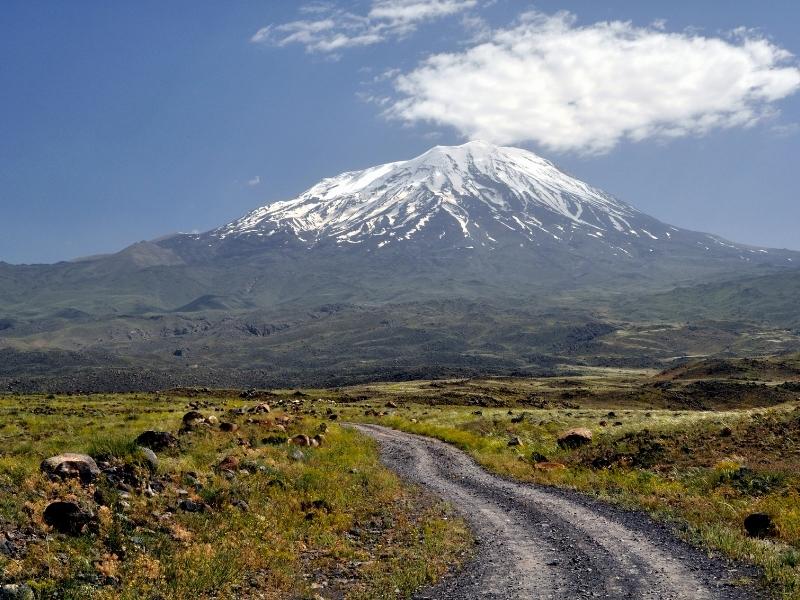
Nemrut Dagi
Explored by Phil & Izzy of The Gap Decaders
No image can do justice to this mysterious mountain and its sweeping dusty and windswept surroundings. Deep in the Taurus mountains, this breathtaking place is one of Turkey’s visitor behemoths and absolutely warrants the drive to get there – which is pretty spectacular in its own right!
Sitting at 2106m above sea level, the peak of Mount Nemrut is topped by the curious gravel-covered burial cone of Antiochus I, which in turn is surrounded by astonishing statues of Antiochus and the gods which are perfectly placed to welcome sunrise and sunset.
It’s relatively easy to drive almost to the peak, between April and October, when the mountains are free of snow. You must park and walk the final few kilometres uphill (around 30 minutes) to reach the east terrace for sunrise, or the west terrace for sunset. You can of course visit at any time of the day, and it will likely be much more peaceful, but seeing the sunrise and that special light on the amazing statues is a pretty special experience.
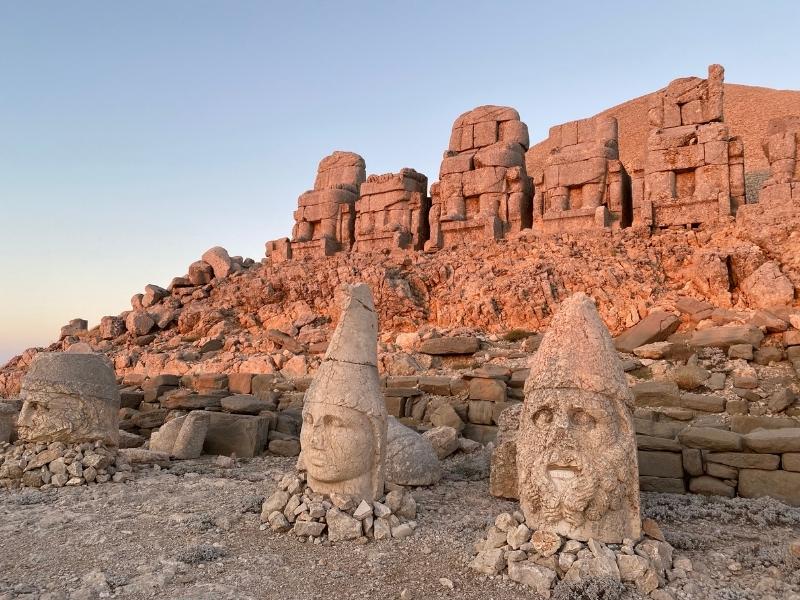
Marmara Region
Edirne
Explored by Iris of Mind of a Hitchhiker
One often overlooked part of Turkey is the region of Thrace on the Balkan Peninsula. The most interesting city in that area is Edirne, pushed up against the Greek and Bulgarian borders. This makes Edirne a tricky destination to squeeze into an all-Turkish itinerary, but perfect for a road trip combo with other Balkan countries.
But the importance of this city to Turkey’s history is more important than its location lets on; it used to be the capital of the Ottoman Empire for more than eighty years before the Ottomans conquered Constantinople. Some of the most revered Ottoman architects of yore built their final masterpieces in Edirne, such as Mimar Sinan’s Selimiye Mosque, a UNESCO World Heritage Site.
Across the river is the Complex of Sultan Bayezid II, which was one of the first teaching hospitals where they treated people with physical and mental ailments for nearly 400 years. This museum is the only one of its kind in Turkey, which together with its excellent exhibition makes it listed for future UNESCO status.
Edirne is also known for the oldest continuous sporting event in the world: the annual Edirne Kırkpınar oil wrestling competition in June and July. Edirne is simply a lovely city at the crossroads of different cultures and times, which makes the municipal agenda for folkloric celebrations always full.
If local specialities are of interest, try out Edirne liver (ciğeri) or try a regional fermented millet drink called velimeşe boza. For more modern flavors and being surrounded by the young university crowd, try a local brew at Trokya Craft Beer Taproom in the pedestrianized city center. There are plenty of restaurants suitable for both vegetarians and omnivores for everyone to have a great time.
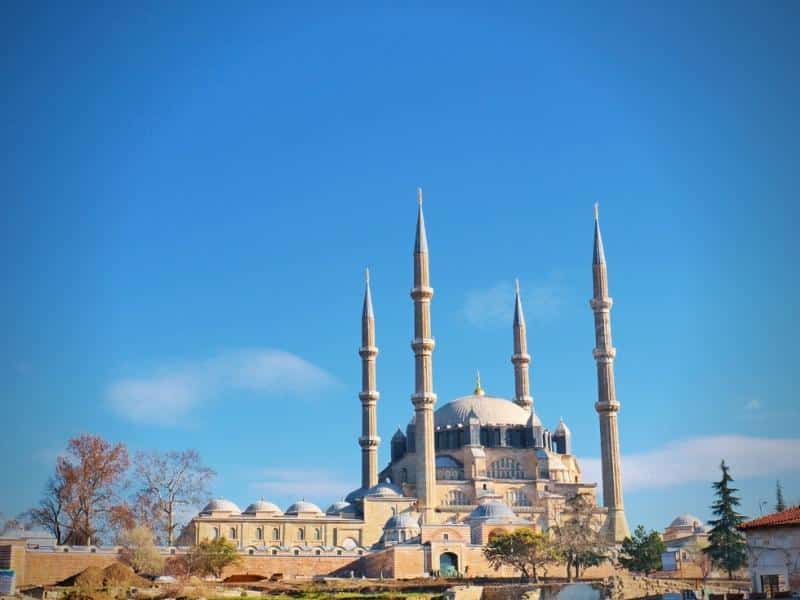
Gallipoli
Explored by Bella of Passport and Pixels
While Turkey is most famous for dramatic landscapes, beautiful beaches, and legendary ancient sites, lovers of history shouldn’t miss another famous – but much more modern – historic site: Gallipoli.
The Gallipoli Peninsula lies on the south coast of the European part of Turkey, on the Aegean Sea. It forms one side of the Dardanelles Strait, and on the other side of this important waterway is the northwestern tip of Anatolia (Asian Turkey).
Because this is such a strategically important bit of land, it was the site of a major battle in 1915, during the First World War. In an attempt to invade Turkey and capture Istanbul from the Ottomans, the Allies, including many Australians and New Zealanders (known collectively as Anzacs), launched an attack on the Gallipoli Peninsula. It was a disaster – around 46,000 people died, and after eight months of fighting the Allies were forced to withdraw.
Today the Gallipoli Peninsula is a moving historic site covering over 33,000 hectares and is home to numerous battlefields, memorials and graveyards. Key places to visit include Anzac Cove, where the soldiers first landed on 15th April 1915; the Anzac Commemorative Site; the Lone Pine Memorial, which stands on the site of some of the fiercest fighting of the campaign; and the Nek, a narrow ridge of land that was the site of another decisive battle.
Take a tour and learn the heart-wrenching stories behind the monuments and the moving tales of hardship, heroism, camaraderie and resilience that took place in this beautiful landscape.
After you’ve visited Gallipoli, a short ferry ride across the Dardanelles will bring you to the colourful port town of Çanakkale, and from there it’s easy to also visit the ruins of Troy, the site of the legendary Trojan War. Visiting both is a great way to take in two of Turkey’s most important historic sites – one modern, one ancient.
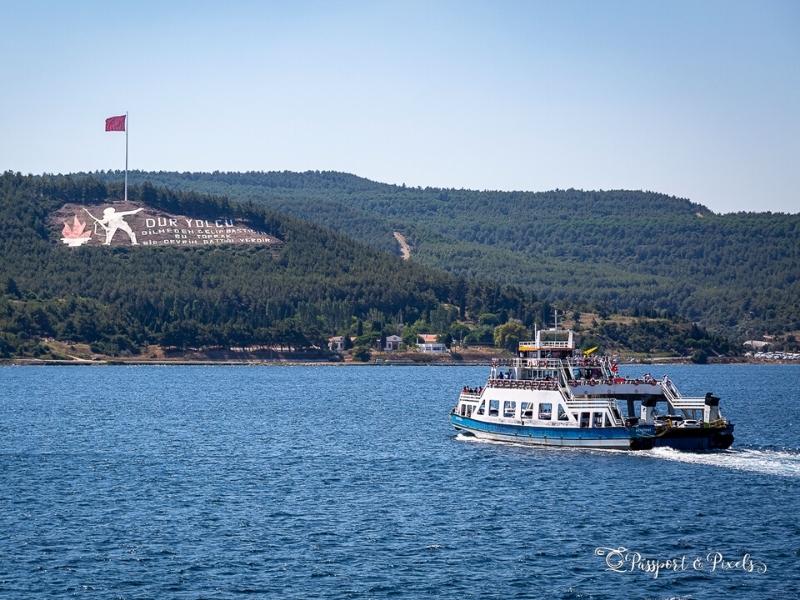
Istanbul
Explored by Phil & Izzy of The Gap Decaders
Turkey’s most famous city is full of layered history, fabulous architecture and rich experiences. Because of its vibrant Turkish culture that extends to both European and Asian continents, spending a few days in Istanbul as you road trip east is a wonderful experience.
Your first day in Istanbul should include visiting the iconic sights of the Hagia Sophia, Blue Mosque, Suleymaniye Mosque and Galata Tower. Leave yourself enough time to really explore each place, and the interminable security queues before you even get in!
The simply breathtaking Topkapi Palace, the wonderful Basilica Cistern and the Grand Bazaar and Spice Bazaar should also be on your list, and you might want to take a walking tour to cover these Istanbul sights and work out what else to see along the way.
Head up to Pierre Loti Hill, where you can enjoy the ultimate panoramic view of the Golden Horn, a major urban waterway and the primary inlet of the Bosphorus. Look on a map and you can see the waterway is shaped like a horn, and so-called because of the riches that were made here.
After your panoramic view, take a Bosphorus cruise to really appreciate the Ottoman architecture of bygone days and find out just how busy this important stretch of water is, or head to Tarihi Hocapaşa Lokantaları street for a taste of real homecooked Turkish comfort food. You should leave a tip in Turkey, especially in places like this where the authentic Turkish food is such good value for money.
Road trips from Istanbul along the Aegean coast or to Pamukkale and Cappadocia are easily organised, and you can also get domestic flights from here to many other Turkish airports if the drive is just too far.
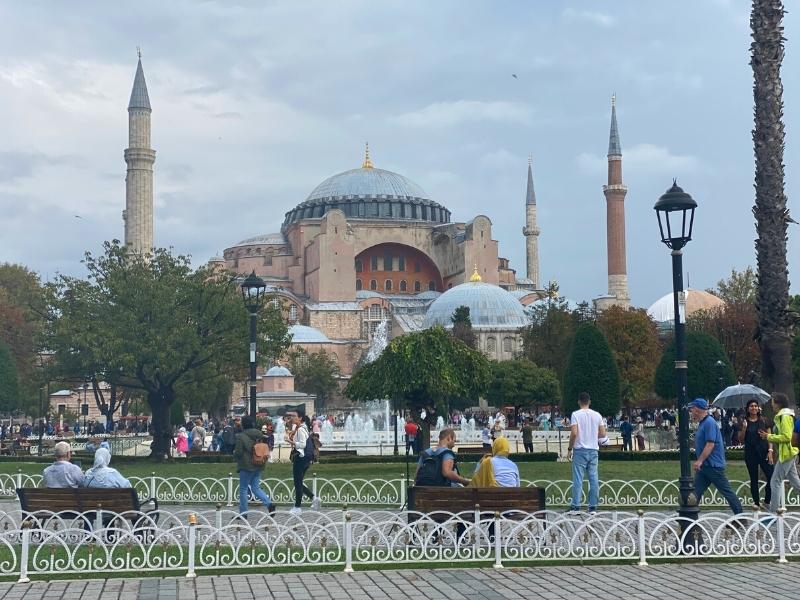
Other Nearby Road Trips
Mediterranean Region
Antalya
Explored by Giorgy of G-Extreme Travel
Antalya is an often overlooked Mediterranean hotspot that boasts some of the best beaches and most impressive landmarks. Located in Southern Turkey, it is sometimes deemed the country’s crown jewel, and it’s not hard to see why – Antalya has a much more laid-back vibe than other Turkish cities, like chaotic Istanbul.
Plus, it offers visitors that irresistible coastal Mediterranean city appeal. So if you’re looking for a road trip spot with plenty to see and do, Antalya should be at the top of your list!
There are numerous tourist attractions and historical sites scattered throughout Antalya that are definitely worth visiting. Some of these include the ancient ruins of Aspendos, Phaselis, Myra, and Alanya’s red tower and castle. Kekova sunken ruins are another popular spot that should not be missed.
In addition to its many historical sites, Antalya also boasts a number of water parks, museums, green spaces, and the famous Aquarium. For those looking for a more adrenaline-pumping activity, there is also the option to take a cable car ride up to Mount Tahtali. And of course, no visit to Antalya would be complete without exploring the old town of Kaleici with its quaint collection of Ottoman houses, old mosques, domineering clock tower, and landmark Hadrian’s gate.
So if you’re looking for more than just a beach vacation, Antalya is the perfect road trip destination for you. There is something here for everyone to enjoy.
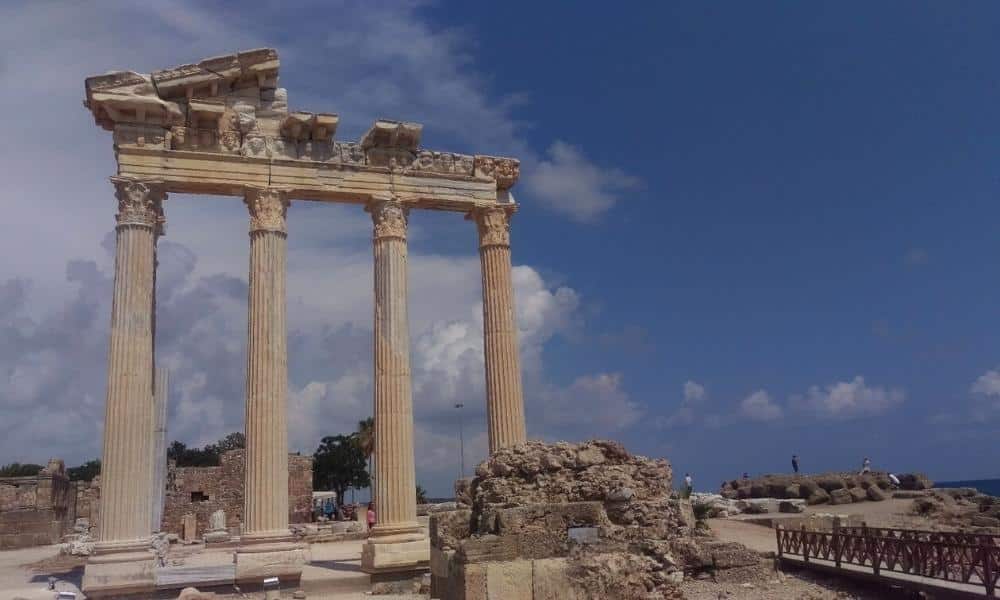
Fethiye
Explored by Michelle of Moyer Memoirs
Any road trip around Turkey should include a stop in Fethiye which is located on the Turquoise Coast, so called because of its stunning colour. Fethiye is a beautiful and unique tourist town on the Turkish Riviera with marinas that cater to international tourists and cruise ships.
The number one attraction in Fethiye is Oludeniz Beach because of its crystal clear water and beautiful sandy beach. Its name means Dead Sea, because of the calm water, making it perfect for scuba diving and snorkelling.
The Blue Lagoon is a separate beach at Oludeniz that is protected by a small strip of land. It is a popular destination for paddleboarders and kayaks since the water is so motionless.
Oludeniz Beach is also known for its great paragliding. Each day dozens of paragliders take off from high on the Babadag mountain and glide to the beach below. It is a great sight to see all the colorful paragliders dotting the blue sky as they float to the sandy beach below.
Make time for a trip across the turquoise sea from Fethiye to the Butterfly Valley on the ancient Lycian Way. You can only get there by boat, making the valley a haven for the hundreds of butterflies species that thrive there. The preservation area is also home to a waterfall that cascades from the 350m high canyon wall to become a gentle river, watering the native chaste trees which are the butterflies’ natural habitat.
Saklikent National Park is another popular place to visit from Fethiye. The park was established in the 1990s and is just a quick drive from the center of Fethiye. The Saklikent Gorge is one of the largest canyons in Europe and the deepest canyon in Turkey. The hiking trails and boardwalks lead right through the canyon and directly to the flowing water in the gorge where there is easy access to the cool water, leading right into some of the beautiful waterfalls.
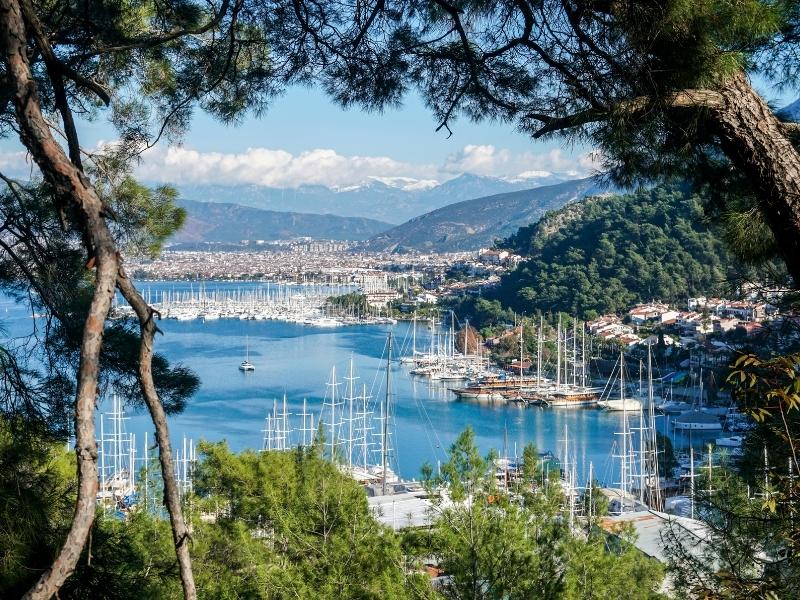
Want to find out more about planning a road trip? In our detailed guide to road trip planning we cover every aspect of planning your perfect road trip, from dream to destination, and everything in between!
Southeast Anatolia Region
Diyarbakir
Explored by Arabela of The Spicy Travel Girl
Diyarbakir may not be your typical tourist destination but it sure is one of the best off-the-beaten-path places to visit in Turkey. Located in the heart of Mesopotamia, also known as the Fertile Crescent, Diyarbakir has been home to human civilization for aeons, dating back as far as the Stone Age.
Since then, Diyarbakir has been part of countless empires, including the Persian and Roman Empires. This diverse history has left its unique traces in the city, which can be seen at historical sites such as the Roman-era city walls, which encircle the old town at a circumference of about six kilometres uninterruptedly and offer amazing views of the riverside grasslands.
It also resulted in a diverse religious history: Diyarbakir had long been an important center of Christianity, and was a see of both the Syriac Orthodox Church and the Armenian Church, until the Muslim Conquest of the Levant.
This left Diyarbakir with various Christian monasteries and churches as well as mosques. Most of the historic structures in the city are constructed with black basalt, including the unique-looking Great Mosque in the city centre. The black-and-white patterns created by the use of this stone give the old town a picturesque appearance resembling a chessboard.
However, ancient history is not the only thing Diyarbakir has to offer. The perhaps most interesting aspect of the city is its contemporary culture: Diyarbakir is Turkey’s largest Kurdish-majority city and is unofficially referred to as the ‘capital of Kurdistan’.
The Kurds are an Iranic ethnic group native to the region with a language and culture distinct from Turkish. Visitors can gain an authentic insight into Kurdish culture while visiting the bustling bazaar of the old town, sampling local street snacks and admiring handicrafts. Furthermore, the Kurds are a very hospitable people and visitors are guaranteed to be warmly welcomed in this less touristy city.
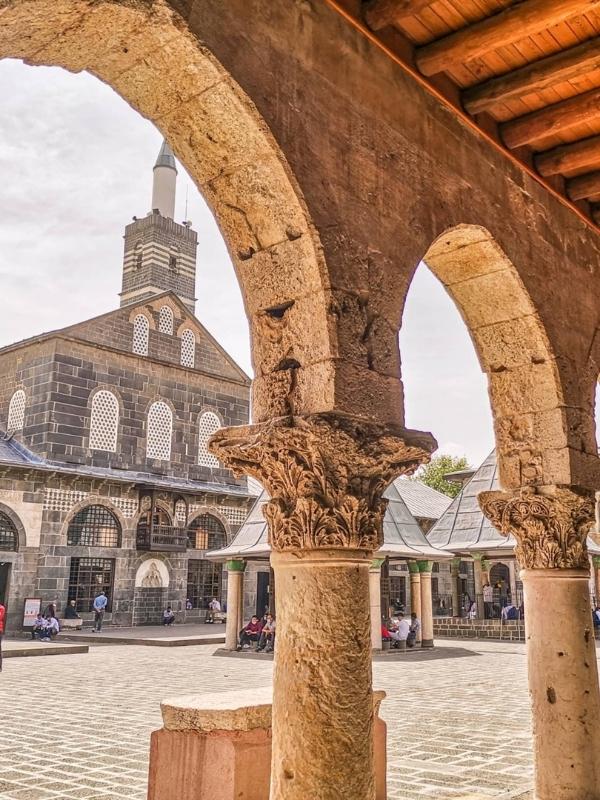
Gaziantep
Explored by Anwar of Beyond my Door
Known as the gastronomic capital of Turkey, Gaziantep has an incredible history of food and culture. The city is known in Turkey as the birthplace of baklava, a delicious sweet filo pastry, honey and nut treat. The baklava here is better than anywhere else in Turkey. Actually, all the baklava manufacturers in Turkey claim origin from Gaziantep and have multiple outposts in the city.
Beyond that, the city has great cuisine including some of the best kabobs (like kebab) in the city. Be sure to check out İmam Çağdaş, one of the best restaurants in the city for Kabobs.
For those looking for history, the city has an incredible fortress that looms over the city. Also, there are several famous museums including the Zeugma Mosaic Museum which houses the famous ‘gypsy girl’ mosaic that often dons various Turkish travel advertisements. The mosaic was found in nearby Zeugma which is also accessible for those wishing to travel outside the city.
The old town of the city houses many markets that visitors can wander through, including the spice market as well as the metal market. Here tourists can pick up local copper and tin products for home decoration or housewares.
Gaziantep is also a jumping-off point for many parts of Southeastern Turkey. Easy roads between the city and places such as Sanliurfa, Mount Nemrut and Mardin make it a good hub to fly into for road trip exploration of this area of the country.
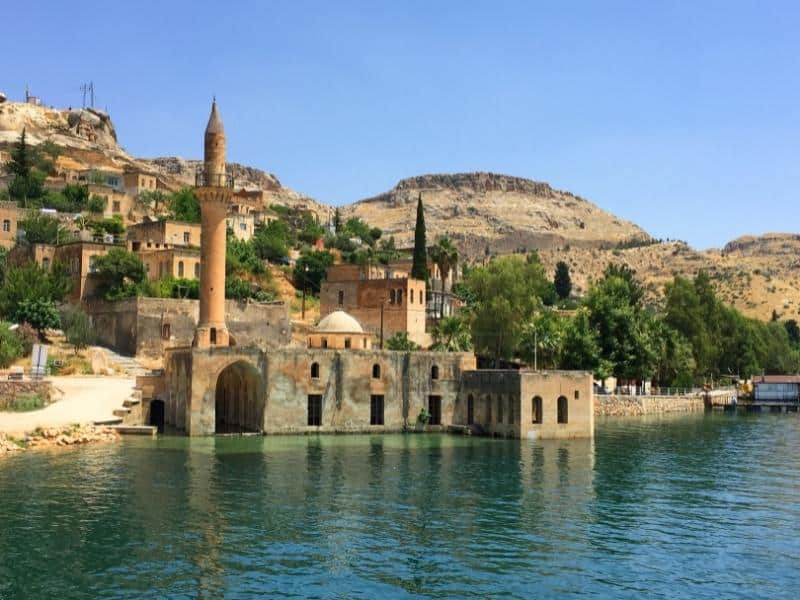
Mardin
Explored by Phil & Izzy of The Gap Decaders
The UNESCO old town of Mardin lies on a rocky hill near the Tigris River that rises steeply over the flat plains of ancient Mesopotamia. This Silk Road city is known for its beige colored limestone Artuqid architecture and is a heady and exotic experience of sights and sounds, which feels both Turkish and Persian.
The top of Mardin’s ridge is occupied by the city’s historic citadel, and below that is the gorgeous Zinciriye Medresesi, a 14th-century educational and spiritual complex and mosque built in the Persian ornamental style. The complex enjoys spectacular views over the lush green Mesopotamian plains below the town, as far as the eye can see to the Syrian border.
The labyrinthine alleys of the old town are lined with eateries, bazaars, boutique hotels and shops, and the colourful spices, fruit and vegetables and local crafts for sale tell the historic story of the city. It’s easy to spend a day exploring before stopping to try some of the local dishes which blend flavours of the regions – expect lamb, hummus, olives and yoghurt-based dishes scattered with jewel-like pomegranate seeds and fresh mint.
Mardin makes a great base for exploring the region and is within easy driving distance of both Göbeklitepe and Karahan Tepe, prehistoric archaeological sites home to the world’s oldest known megaliths and obelisks, where recent finds are challenging what is known about the earliest societies in the world.
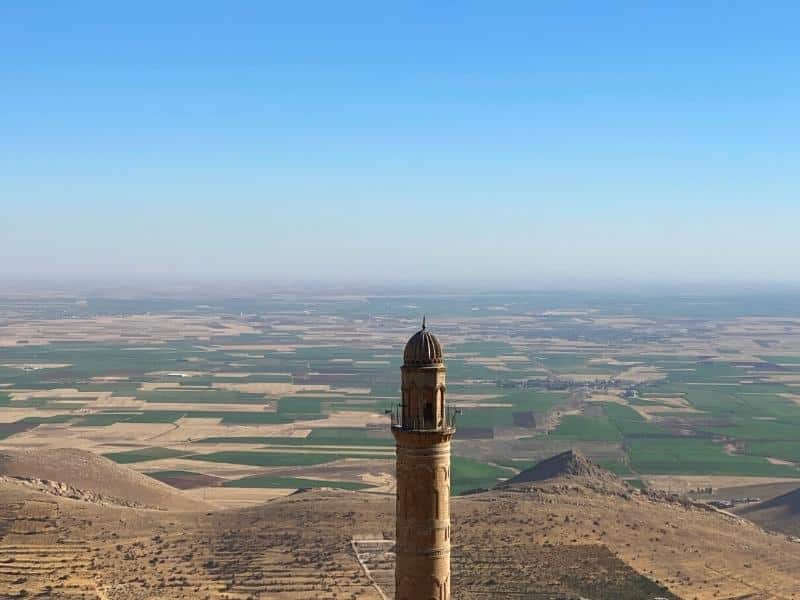
Şanlıurfa
Explored by Chris of Amateur Traveler
While many visitors to Turkey get to the cities in the west like Istanbul, few get to some of the great sites in eastern Turkey. The city of Şanlıurfa in eastern Turkey is a fascinating city. If you travel from west to east in Turkey, the country significantly changes when you get to Şanlıurfa.
The demographics of Şanlıurfa are significantly different from the nearby city of Gaziantep. Instead of Turks, the city is mostly composed of Arabs, Turkmen and Kurds. People in Arab dress are suddenly much more common as if you had entered a new country.
The city has a couple of particularly important sites. Outside of town is the neolithic site of Göbekli Tepe. This UNESCO World Heritage site is over 10,000 years old and contains some of the oldest known megaliths.
More significant to Turks is the site in the center of the city of Sanliurfa which Turks claim is the birthplace of the patriarch Abraham. The city has also been associated with the story of Job from the Bible. For this reason, the city is known as the ‘city of the prophets’. The Mevlid-i Halil Mosque and the Pool of Abraham are must-see sites. Inside the courtyard of the mosque is a cave that is held to be the birthplace of Abraham.
Legend has it that the local ruler Nimrod had Abraham thrown into a fire to execute him but that God turned the fire into fish. The Poll of Abraham is supposed to be the site of that event. Now you can rent a row boat and enjoy the lake without any threat of immolation.
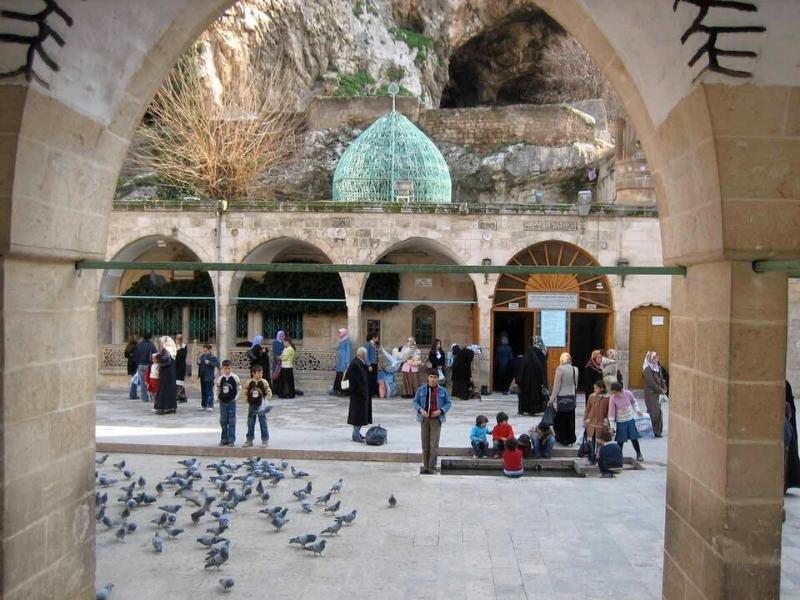
Turkey Essentials
Here are the websites and services we personally use and recommend for traveling in Turkey.
Are you looking for more beautiful road trips? Check out these stunning destinations…
Europe Road Trip: 25 Incredible Routes
Norway Road Trip: Four Unmissable Routes
Morocco Road Trip: An Epic Atlantic to Sahara Journey
Road Trip Georgia: 6 Amazing Routes
Scotland Road Trip: 8 Incredible Routes
The Ultimate Bucket List Italy Road Trip
Love it? Pin It!
